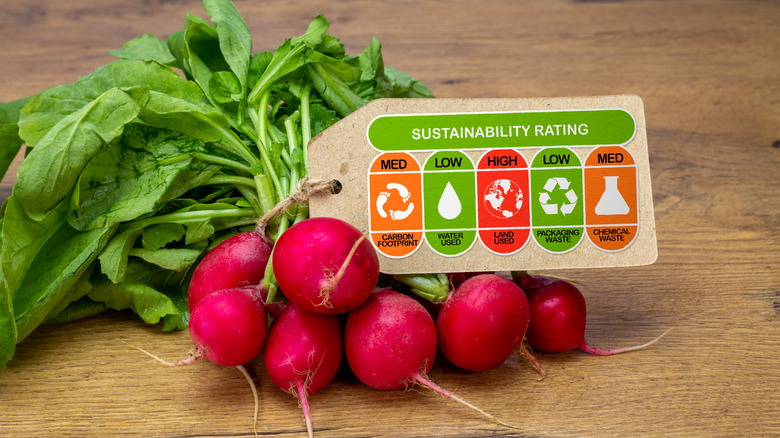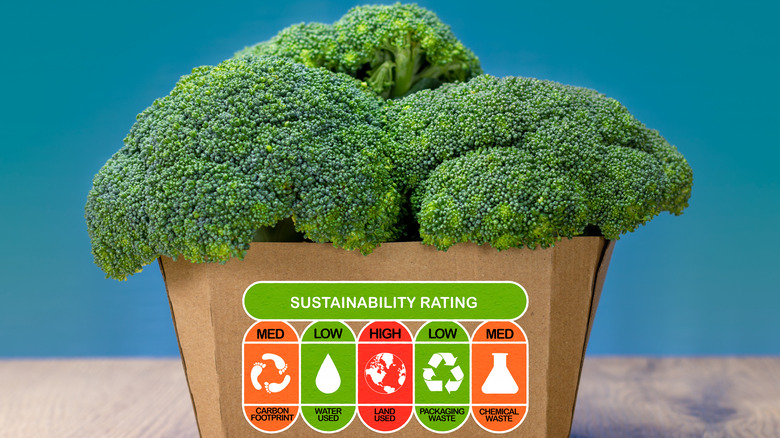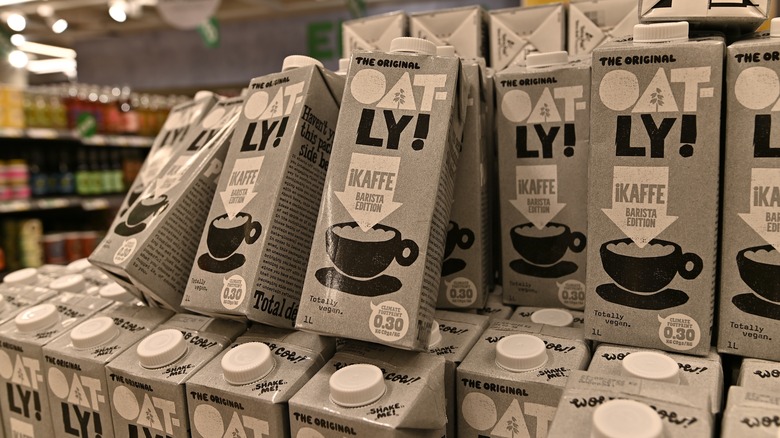Carbon Food Labels May Be Coming. Here's What They Mean
When the COP26 climate conference took place in Scotland last year, participants got something they probably hadn't seen before — menus that listed the carbon footprint for every item on offer, from salads and vegetarian sandwiches (per A Recipe for Change) to fish and chips (1.1 kg of carbon per A Recipe for Change) and Scottish beef burgers (3.9 kg of carbon, per A Recipe for Change).
There was a reason for this, says food activist Klimato — which was partly responsible for pulling the carbon footprint information together. They felt that despite food being responsible for generating just over a third of the world's carbon emissions, it was noticeably absent from the COP26 agenda. Adding the carbon footprint was a way of ensuring that "food's impact on the climate was not going to fly under the radar."
Today, scientists are asking whether having carbon labels on food items might actually help people make more informed choices, not only about the food they consume, but also the ingredients they buy. Chief Scientific Adviser for the U.K. Food Standards Agency thinks it might. "People are much more attentive to food now," May says, per Financial Times. "We know that a very significant portion of the population has shifted their diet or tried to shift their diet in the last 12 to 18 months in order to become more sustainable [and] Consumers [have a right to] honest, transparent labelling of food."
Surveys show support for carbon labels
May's assertion is backed by a 2020 survey showing that two-thirds of consumers from countries including France, Germany, Italy, the Netherlands, Spain, Sweden, the U.K. and the U.S. are supportive of the idea of having carbon labelling on food item, with support for the idea is highest in France, Spain, and Italy, according to Carbon Trust. Hugh Jones, Managing Director of the Carbon Trust says the results of the survey "aligns with the growth in corporate demand for product carbon footprinting and labelling that we have witnessed over the past year."
Jones also believes that "passing this information on to increasingly well-informed and climate-conscious consumers can also enhance a company's reputation and market share."
Some disagree, like candy and confectionery maker, Mars Incorporated's CEO Grant Reid. He believes consumers still don't know much about the climate impact of their food and that "there's a much bigger consumer challenge than just popping [a carbon footprint] on the label. These labels are a good experiment. They are good steps in the right direction. But it's not sufficient," per Time.
Consumers may need carbon labels to make the right choices
Some countries aren't waiting for their consumers to ask. The Financial Times says Denmark has already agreed to setting aside $1.3 million to "develop carbon labelling proposals" before the end of 2022, while food companies like Oatly and Quorn have already taken the initiative to inform the public about the carbon footprint of their products. As CarbonCloud's chief executive David Bryngelsson puts it, access to accurate information is important, because "the public's gut feeling is 'absolutely terrible' when it comes to judging which steps of food production created the most emissions."
Anecdotes from those who took part in COP26 suggest that Bryngelsson may be right. German delegate Peter Odrich told The Washington Post that he was surprised by the meat options on the conference menus. He eventually chose the item with the lowest carbon footprint on the menu — a vegetarian tempura broccoli (0.8 kg of carbon, per A Recipe for Change).


